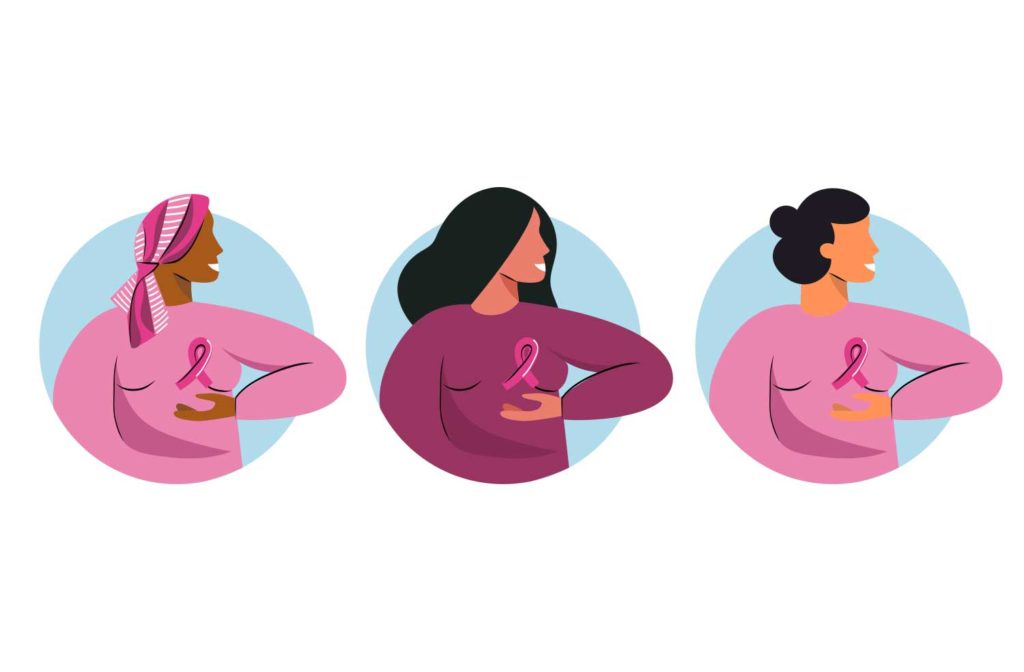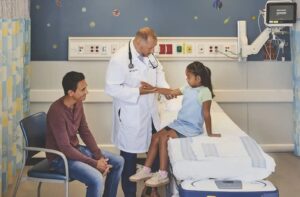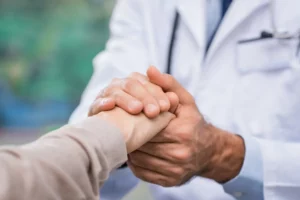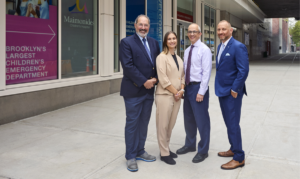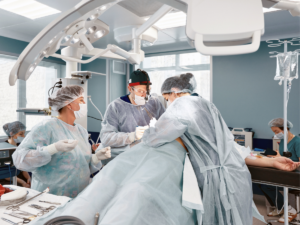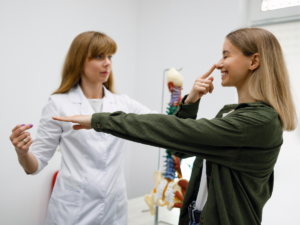Summary
Who should get a mammogram and how often? Dr. Christina Giuliano, from the nationally renowned Maimonides Breast Center, discusses the latest recommendation when it comes to you and your breast health.
Listen on Spotify Listen on Apple Podcasts Listen on Google Podcasts
Transcript
Caitlin Whyte: Who should get a mammogram and how often? Today, we’re talking about the latest recommendations when it comes to you and your breast health. Joining us for that conversation is Dr. Christina Giuliano, the Director of Breast Imaging at Maimonides Medical Center.
This is my Maimo Med Talk. I’m your host, Caitlin Whyte. So doctor, to begin here, how do I know if I should be getting a mammogram?
Christina Giuliano, MD: So we know from many years that annual screening mammography starting at age 40 saves the most lives. When we find breast cancer early, that’s when we have the most options for treatment. Approximately 75% of women who are going to be diagnosed with breast cancer have no family history or high-risk history. So in order to save the most lives, we recommend annual screening mammography starting at age 40.
Caitlin Whyte: Now, there are so many different recommendations as to when women should get their first mammogram. Why do you suggest 40 and over?
Christina Giuliano, MD: We know that breast screening saves lives starting at 40. Thirty percent fewer women die from breast cancer that would have died had we not started screening mammography. All major health organizations, American Cancer Society, American Society of Breast Diseases, American College of OB-GYN, American College of Radiology and Society of Breast Imaging, all recommend annual screening mammography beginning at age 40.
I think the confusion comes in is because something called the United States Preventative Task Force, which is a group of individuals who did not include anyone who has any expertise in breast imaging, oncology. They basically looked at outdated limited review of selected data that used outdated equipment to come up with recommendations that said start at 50. And I think this caused a lot of confusion for women. You know, the task force, you know, their goal is to make recommendations that insurance companies are going to follow and therefore they can determine what’s going to get covered by insurance and what isn’t.
So our goal as breast imagers and those who treat breast cancer for a living is to find it earliest when it’s most treatable, so we want to save the most lives.
Caitlin Whyte: Now, what is is the relationship between breast cancer risk and other cancers?
Christina Giuliano, MD: So some breast cancers are associated with some genetic diseases and patients who, for instance, have BRCA2 or BRCA2 may be prone to have ovarian carcinoma or pancreatic carcinoma. In men who are BRCA2, they also have a higher risk of prostate carcinoma. So we watch those patients earlier more carefully and for other cancers as well.
Caitlin Whyte: Is there anyone who should be getting mammograms earlier or more frequently?
Christina Giuliano, MD: So all women should discuss their risk factors with their doctors or healthcare providers by the time they’re age 30, especially for black, Jewish or other minority women who are more likely to have genetic mutations and/or develop more aggressive breast tumor. So the ones who are at a higher risk are patients who have a known genetic mutation or a lifetime risk of greater than 20% by one of the family assessment models that we use. For instance, there’s something called Claus, Tyrer-Cuzick. Genetic counselors very often use these to help guide women make decisions.
Patients who have breast cancer history and have dense breasts at any age or anybody who was diagnosed with breast cancer less than 50, we usually start earlier and/or add supplemental screening such as MRI. Someone who had a history of chest radiation therapy before age 30 is at a higher risk of breast cancer. Again, what we do is in addition to mammography, we actually add MRI in these patients because they’re high risk. If a patient has a history of a high-risk lesion such as atypical duct hyperplasia or atypical lobular hyperplasia, at a younger age, we start screening.
The other thing is we look at a family history and we usually start screening patients approximately 10 years earlier than a first-degree relative. So if your mother was diagnosed with breast cancer at 45, we would start screening those patients at 35.
Caitlin Whyte: Can you tell us about NAPBC accreditation and what that means to a woman who is looking to schedule a mammogram?
Christina Giuliano, MD: NAPBC means National Accreditation Program for Breast Centers and that’s actually overseen by the American College of Surgeons. But a program that has NAPBC accreditation covers all the bases and functions as a team. That means they have good radiology, good surgery, good radiation-oncology, good oncology. Everybody has to work together as a program.
For someone who’s getting a mammogram, to be part of NAPBC, you have to be equivalent of a Breast Imaging Center of Excellence, which basically means for that you submit all kinds of data information. They look at your credentials, education of the physicians, outcomes of the facility, so you know you’re getting the most patient-focused breast center that’s following the highest quality measures and the highest standards that are out there.
Caitlin Whyte: Just what is the difference between different mammogram technologies? And is there one that’s better than the other or some that you prefer?
Christina Giuliano, MD: Mammography starkly was film screen, you know, which was like the old camera and a photograph with film. Then, it went to digital. We got better and we found more cancers, especially in younger women and women with denser breasts and premenopausal women. And now, we actually have something called tomosynthesis, which is a 3D mammogram and does slices now through the digital. So our technology is getting more accurate and starting to address some of the limitations we used to have with standard mammography.
So the problem is a finding that’s abnormal can be white, breast tissue can be white, and you couldn’t distinguish them. Now, with the 3D technology, we can actually do slices in the breast and differentiate that a little bit better and see the architecture and find areas of distortion a little bit better than standard mammography imaging.
Caitlin Whyte: Now, when it comes to insurance, are mammograms typically covered?
Christina Giuliano, MD: Currently, mammograms are covered by insurance. There was something called PALS, which is the Protect Access To Lifesaving Screening Act in 2015. And that’s going to end sometime I believe in early 2022. And that basically put a moratorium on US Task Force recommendation, which would have prevented payment for women age 40 to 49 or women over the age of 74.
A lot of the controversy, I think, is the task force, unfortunately or fortunately, however you want to look at it, make recommendations that insurance companies then will act on. So we know breast screening saves lives and we actually have forced insurance companies to take a break. And the PALS Act actually forces them to cover mammography for patients from 40 on without any cost out of pocket.
Caitlin Whyte: You know, getting a mammogram is often a little nerve-wracking. What should I expect after a mammogram if the results are not normal?
Christina Giuliano, MD: So the results, the vast majority are normal. If they’re not normal and that’s about 10% of patients are going to be called back for a finding that we see, a vast majority of those are going to end up being something benign, such as a cyst or something called a fibroadenoma, which is a very common benign lump. And those patients, if it’s clearly benign, we say, “See you next year.” Sometimes it’s just an extra picture to press out a little area of tissue density. If it’s a probably benign lesion that we believe, you know, has a very, very low chance, less than 2% chance of being cancer, you may get a six-month followup for something like that. And if there’s anything suspicious, that comes through about 2%, 1% to 2% of cases, we will do a small needle biopsy, which is percutaneous with local anesthesia and very well tolerated.
Caitlin Whyte: And wrapping up here, are there any radiation risks to mammograms?
Christina Giuliano, MD: Mammogram is extremely low radiation. It’s about the equivalent of two months of background radiation and the benefits of finding a cancer far outweigh any risks of radiation.
Caitlin Whyte: Well, doctor, a lot of great information. Anything else you want patients to know?
Christina Giuliano, MD: I think the thing people need to know is early detection, you know, saves lives, reduces the severity of treatment that women with breast cancer undergo, so you’re less likely to get chemotherapy or a mastectomy. The idea of mammography is to find it early when it’s most treatable.
Now, the mammography, it’s like a seatbelt. You put a seatbelt on every time you get in a car, because if you’re in a car accident, it can save your life. Well, a mammogram is the same thing. If you’re not going to get breast cancer, basically, you know, it’s not going to do anything. But if you’re unfortunately one of the thousands of women who’s going to be diagnosed with breast cancer, they could find it earlier and save your life because we can offer more options for women when we can find it at earlier stages.
Caitlin Whyte: Well, thank you so much for this information. As someone with breasts, I know how confusing all the milestones can be. So this really helped out. Call (718) 765-2550 to schedule your mammogram at Maimonides Breast Center. That’s (718) 765-2550.
This has been Maimo Med Talk. I’m your host, Caitlin Whyte. Stay well.

